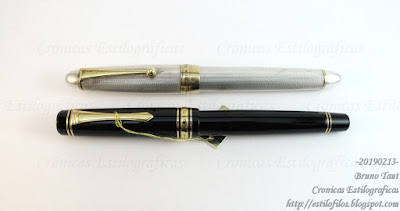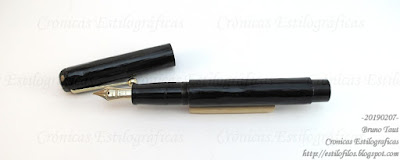Hakase uses Pilot and Sailor nibs with their own original imprint. Ohashido and Taccia do the same with Sailor nibs.
The rest either use Pilot nibs without any modification –StyloArt Karuizawa— or use some of the traditional supplies of third party nibs: Bock for Eboya and Masahiro (although previously Masahiro implemented Pilot nibs); JoWo for Taccia (lower end pens) and Wajimaya Zen-ni.
The newcomer Iwase Seisakusho aims at sourcing its nibs from old nibmeister Kubo Kohei for its original pens. However, this is still an uncertain operation whose continuity we can only speculate about. Not to mention that the old age of Kubo Kohei –pushing 90 years old-- might affect any plan for a long term supply of parts.
But the bottom line is that Kubo Kohei is the sole independent maker of nibs in Japan, and his production is small, slow and artisanal.
Is there room –and market— for another independent operation in Japan to supply nibs and feeds to small pen companies?
Iwase Seisakusho prototype with Henckel nib – Takeda Jimiku Hisoku
Bruno Taut
Chuo, February 12th 2019
Etiquetas: Pilot, plumín, mercado, Sailor, Eboya, Hakase, Ohashido, Iwase Seisakusho, Taccia, Bock, JoWo, Wajimaya, nibmeister Kubo Kohei
Bruno Taut
Chuo, February 12th 2019
Etiquetas: Pilot, plumín, mercado, Sailor, Eboya, Hakase, Ohashido, Iwase Seisakusho, Taccia, Bock, JoWo, Wajimaya, nibmeister Kubo Kohei































